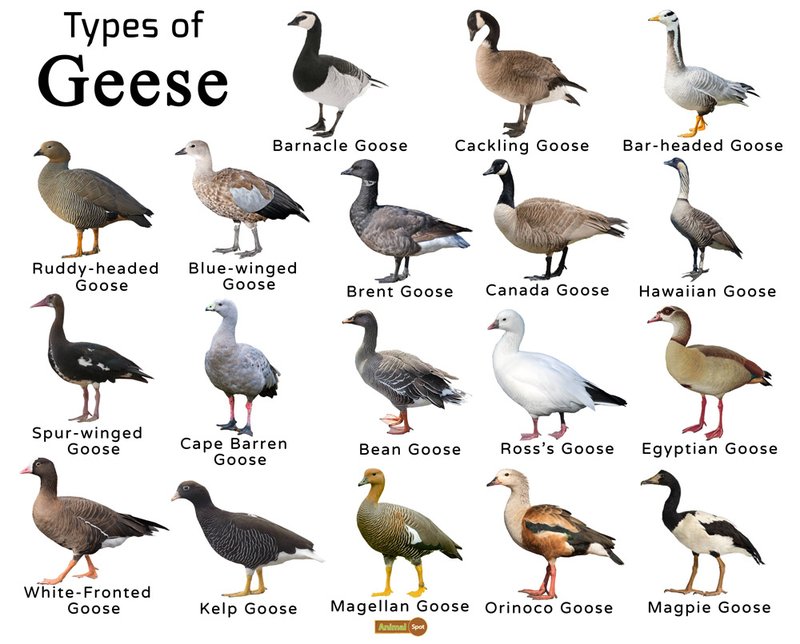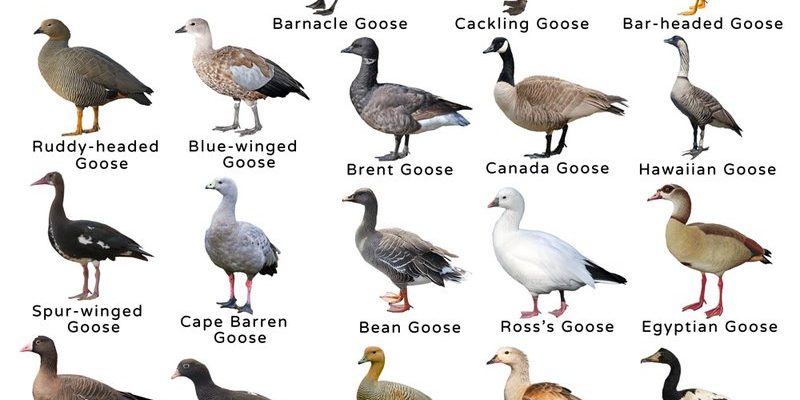
Think of identifying a goose like solving a puzzle. Each clue you discover—their size, color, and sounds—can help piece together the bigger picture of who they are. Whether you’re a curious beginner or someone with a bit of experience, this guide will walk you through the essential characteristics of geese, making it easier to spot them on your next adventure.
Let’s dive into the wonderful world of geese. They can be found in various habitats, from parks to wetlands, and come in many shapes and colors. Here, we’ll explore how to identify these charming birds and even share some fun facts along the way.
Physical Characteristics of Geese
First, let’s start with the basics. Geese are generally medium to large-sized birds that belong to the Anatidae family, which also includes ducks and swans. They have distinctive features that make them stand out among other birds.
You might notice their long necks and rounded bodies, which help them swim gracefully in water. Most geese have a broad bill, perfect for their herbivorous diet. Their feathers can range from grey and brown to black and white, and they often sport unique patterns. For instance, the Canada goose has a black head with a white cheek patch, while the domestic goose usually displays white feathers.
Additionally, geese have strong legs and webbed feet, allowing them to navigate both land and water. If you see a bird waddling awkwardly on land or gliding effortlessly on a pond, you could be looking at a goose!
Distinctive Sounds of Geese
Another key factor in identifying a goose is their sound. Geese are known for their loud honking, which can travel quite a distance. If you hear a series of honks, it’s likely that a flock is nearby.
Different species of geese have unique vocalizations. For example, the American black goose has a more varied range of sounds, often including soft quacks. On the other hand, the common goose has a deeper honking sound.
It’s interesting to note that geese communicate with each other through their calls, especially during migration or when they are in flight. If you’re out in the wild and hear a cacophony of honks, look up! There’s a good chance you’ll see a V-shaped formation flying overhead.
Behavioral Traits of Geese
Geese have some fascinating behaviors that can help you identify them more easily. One of the most notable is their social nature. They are often found in groups, known as flocks, which can range from a few individuals to several hundred during migration.
When you see a group of geese, pay attention to their interactions. They often engage in playful activities, like splashing in the water or grazing together on grassy areas. Geese are also protective of their young, so if you spot a pair with goslings, you’ll likely see them being quite vigilant.
Another interesting behavior to note is their migratory patterns. Many species of geese migrate seasonally, flying south for the winter and returning north for the spring. If you catch a glimpse of a large group flying in a characteristic V-formation, it’s an impressive sight that signals migration.
Habitat and Range
Understanding where geese live can help you identify them. Geese are adaptable birds that thrive in a variety of habitats, including freshwater lakes, rivers, marshes, and even agricultural fields.
In North America, the most common species include the Canada goose and the snow goose. They can be spotted in urban parks or rural farmlands, making them quite accessible for observation. In Europe and Asia, you might encounter the greylag goose, which prefers wetlands and grasslands.
If you’re planning a trip to look for geese, consider visiting areas near water bodies or grasslands during early morning or late afternoon. That’s when they are most active, foraging for food or resting.
Identifying Different Goose Species
Identifying the specific species of goose can be quite rewarding. Here are a few common ones to look out for:
- Canada Goose: Recognizable by their black head, white cheek patches, and honking calls.
- Snow Goose: White plumage and a distinctive black grin patch on their bill make them easy to spot.
- Greylag Goose: Larger and heavier, with a grey body and an orange bill—commonly found in Europe.
- Egyptian Goose: Unique with a chestnut-brown and cream plumage, along with striking facial markings.
Each species has its own quirks and behaviors, so observing them closely can enhance your experience. Bringing a field guide or using a birding app can also help you become more familiar with the variety of geese you might encounter.
Tips for Goose Watching
If you’re excited about spotting geese, here are some handy tips to make the most of your experience:
- Be patient: Geese can be skittish. Stay quiet and still to avoid scaring them away.
- Use binoculars: Binoculars can give you a closer look without disturbing the birds.
- Dress appropriately: Wear comfortable clothing and sturdy shoes for long walks in parks or wetlands.
- Know the seasons: Familiarize yourself with migration seasons to catch geese at their most active.
Remember, it’s not just about the sighting; it’s about enjoying nature. Maybe you’ll feel a sense of peace or connection to the environment as you watch these captivating creatures.
Identifying a goose in the wild can be a delightful adventure, opening up a world of learning and appreciation for nature. With their unique physical traits, distinctive sounds, and engaging behaviors, geese are truly remarkable birds. Whether you’re spotting them in your local park or on a nature hike, these tips will help you recognize and appreciate geese with confidence.
So next time you hear a honk or see a flock in flight, you’ll know exactly what to look for. Embrace the joy of birdwatching and let your curiosity guide you—there’s a whole world of wildlife waiting to be discovered!

